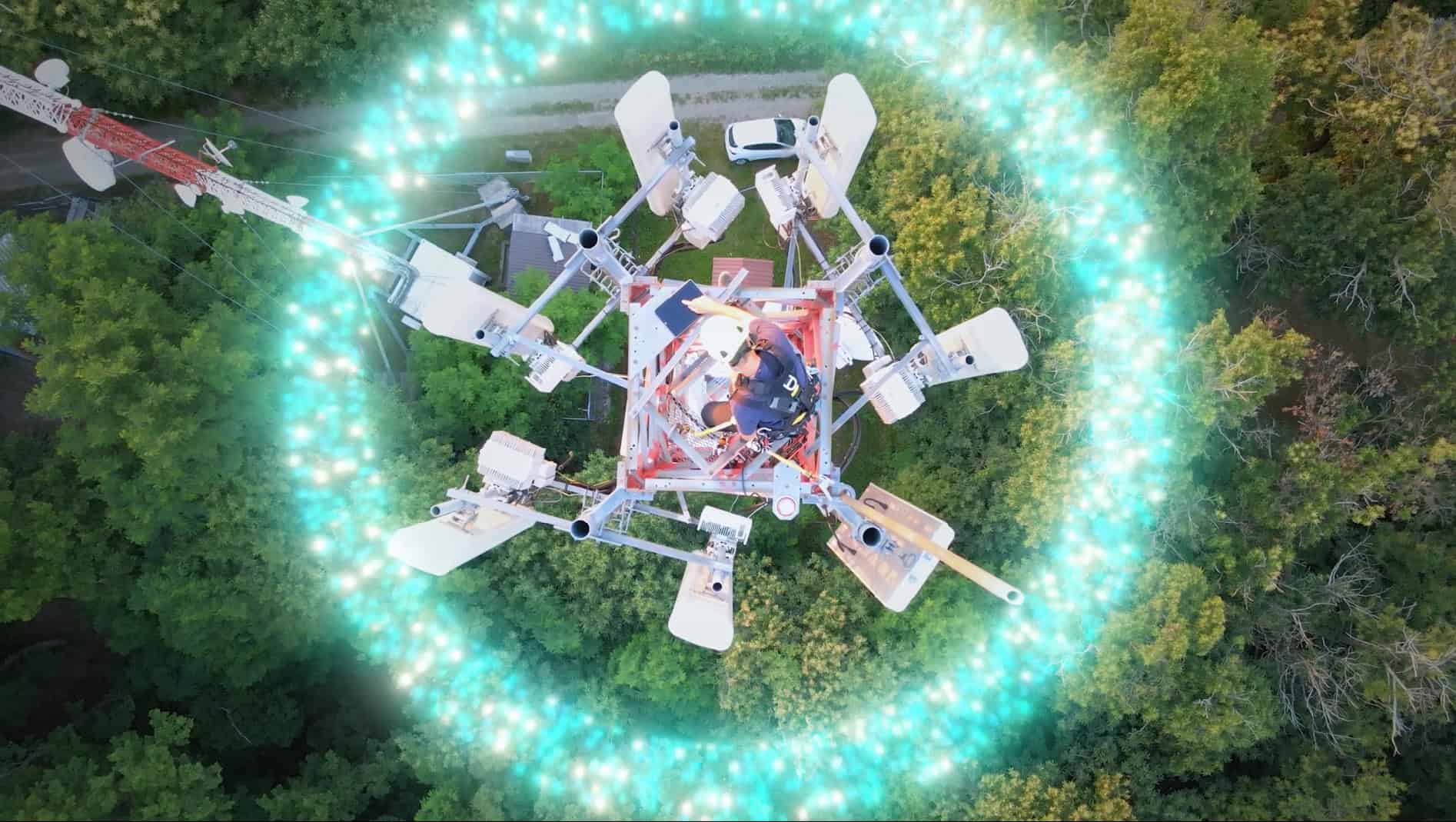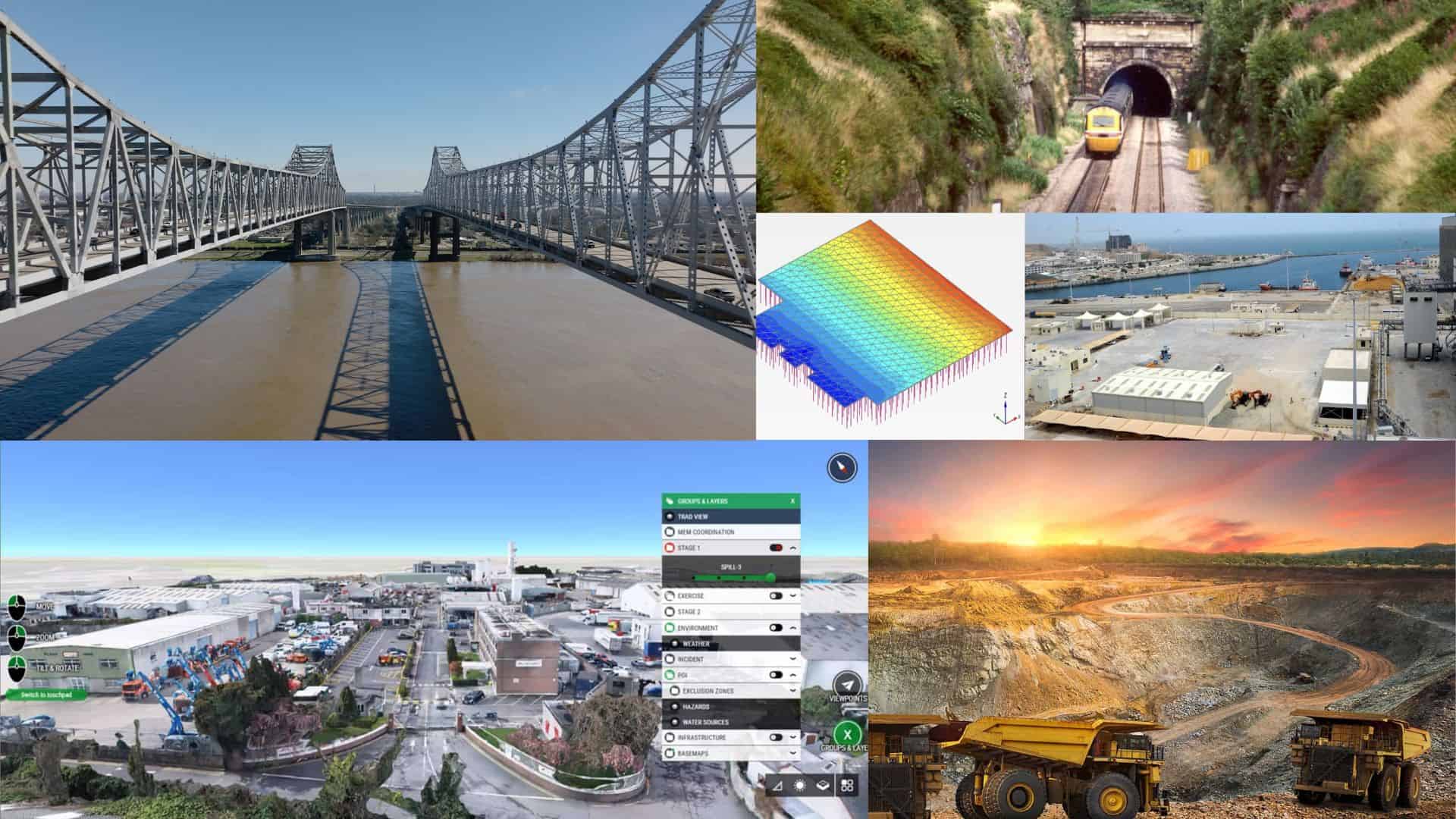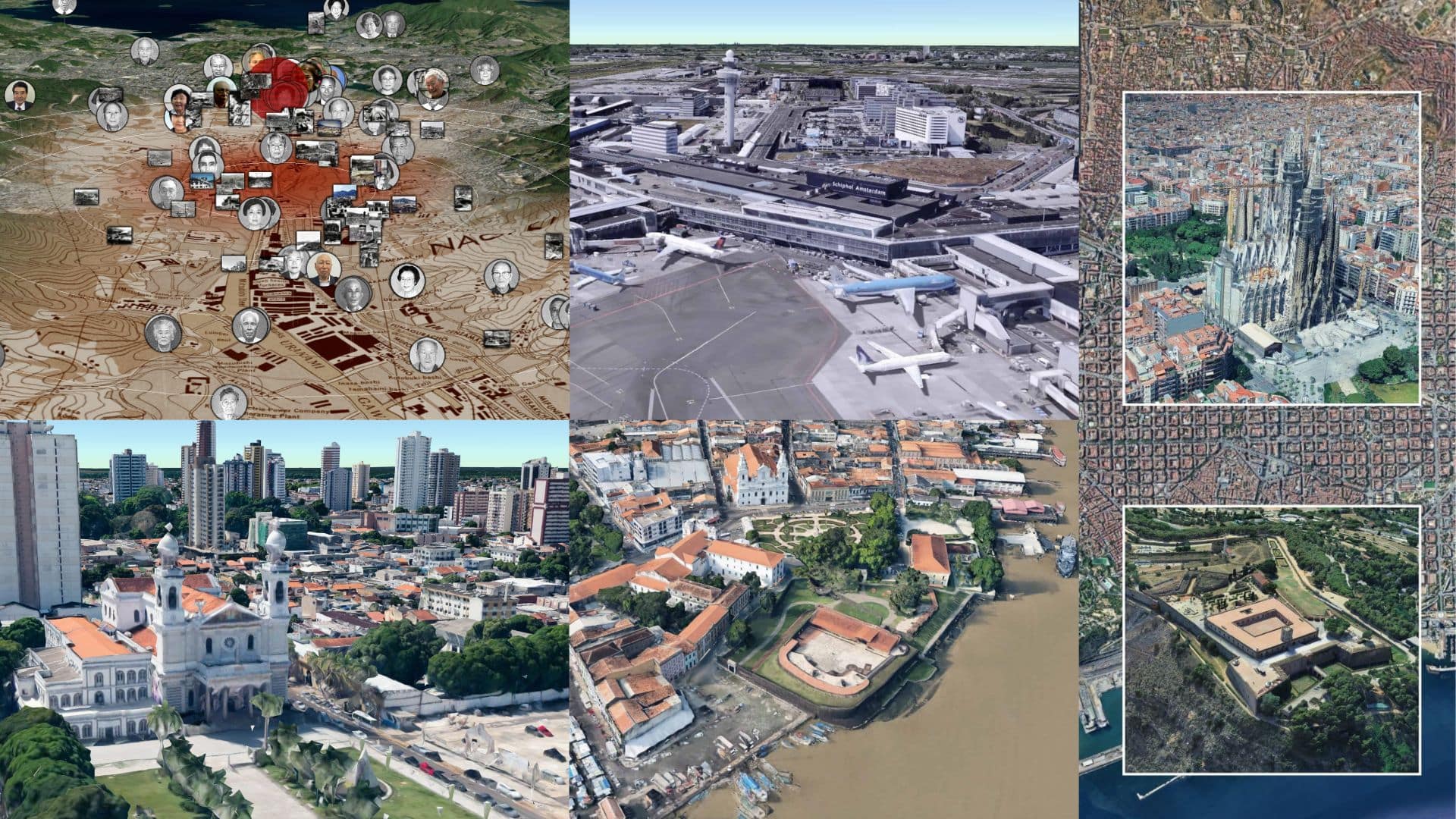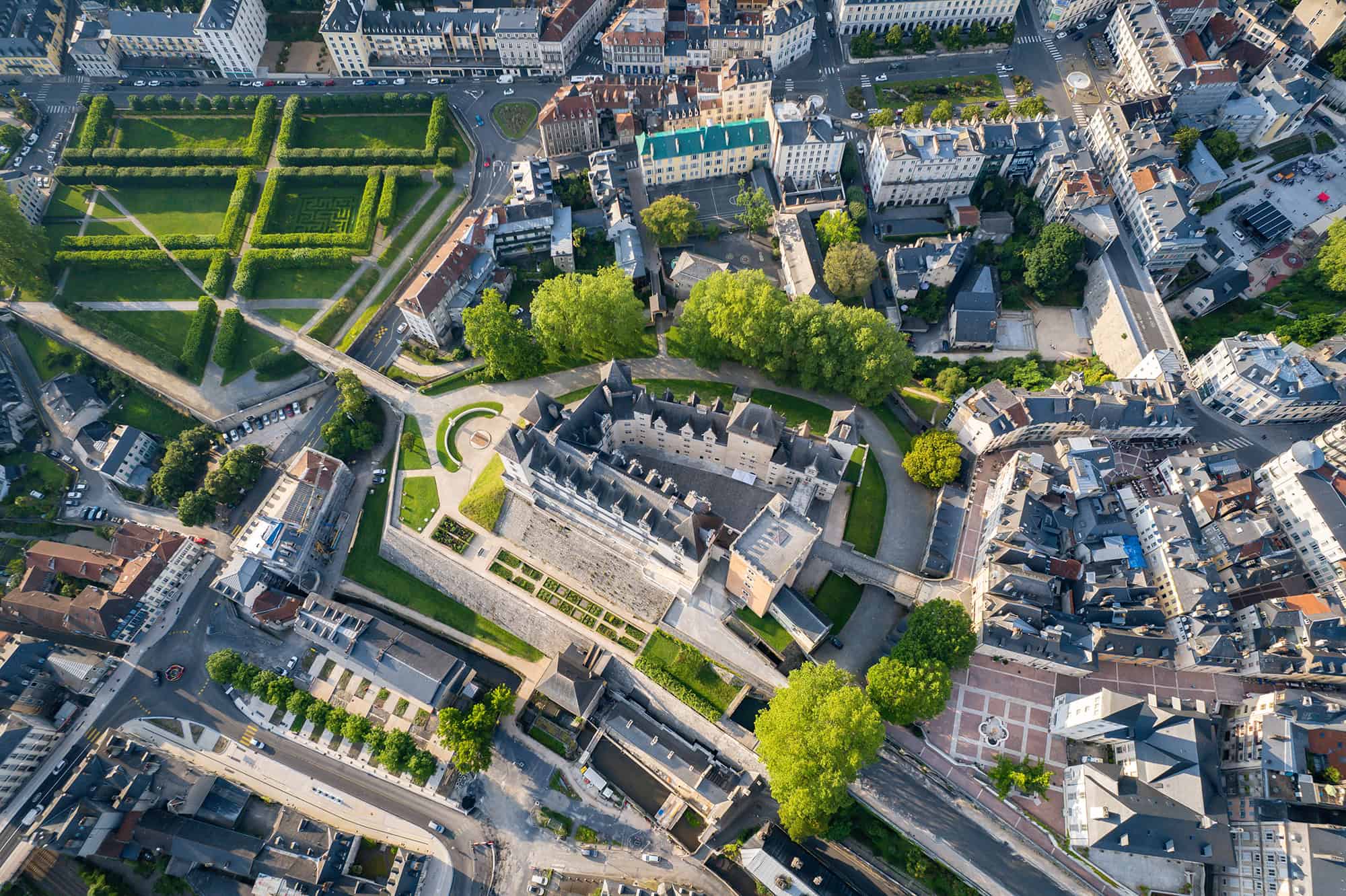Greg Demchak has two views from his desk on the 43rd floor of a glass tower in London. He can look down at the cityscape — the pale dome of St. Paul’s Cathedral, the Victorian Gothic splendor of Tower Bridge and the silty River Thames. Or he can look up at the virtual version. “It’s a pretty sick view,” he says, though it’s hard to tell which view he means.
As vice president of Bentley Systems’ Emerging Technology Group, Demchak and his team built a detailed digital twin of London at the company’s innovation lab, or iLab for short. The virtual model gleams from a giant LED screen in the office foyer.
The view of real London is grand, but the virtual one combines geospatial and engineering data with the latest gaming technology, like Epic Games’ Unreal Engine. The digital model allows users to zoom around London’s new crop of iconic skyscrapers. Like a seagull, users can hover high above “The Walkie Talkie,” the handset-shaped building at 20 Fenchurch Street; zoom in on “The Cheesegrater,” the wedge-like structure of 122 Leadenhall Street; or explore “The Jenga” of 8 Bishopsgate, which houses the U.K. headquarters of Bentley, the infrastructure engineering software company. “Architects and engineers now have a way of interacting with infrastructure that brings the last 30 years of gaming technology into the mix,” Demchak says.
But that’s far from the whole story. Bentley’s resident visionary is already tapping artificial intelligence (AI) and pushing things to a new level. “What happens when you bring AI into the mix?” he asks. “What does our future look like then?”
The coolest show in town
Guests will get a sneak peek during Bentley’s annual The Year In Infrastructure and Going Digital Awards. The two-day event begins Oct. 8 in Vancouver, Canada. Demchak and the iLab team have turned a section of the venue into a time machine with their interactive exhibit, the Immersive Infrastructure Experience: From Aqueducts to AI. The cavernous space takes visitors on a high-tech journey through the history of infrastructure. It starts thousands of years ago, in the age of stone roads, bridges and aqueducts. Then it jumps to the present and future, where technologies like generative AI and other innovations are helping engineers design, build and manage infrastructure in smarter, more efficient ways.
The exhibit uses generative AI to show how the technology can transform architecture and the infrastructure sector. Combined with the latest text-to-image systems and cutting-edge object detection techniques, the exhibit is designed to tap our eternal sense of childlike wonder and make attendees feel like they’ve just wandered into the coolest show in town.
Seeing is believing
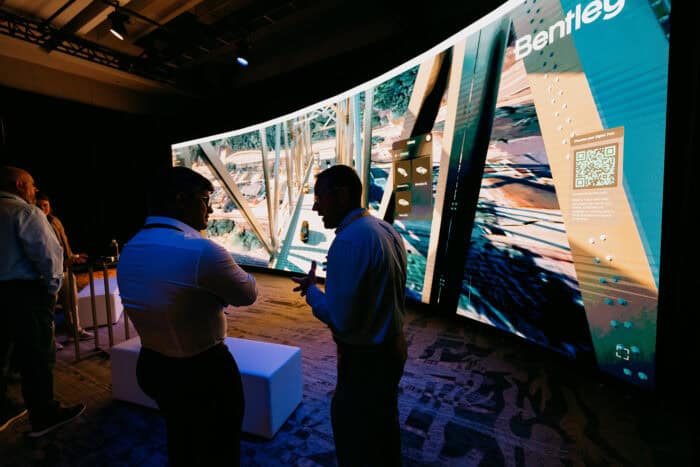 Attendees experience an immersive video at the iLab exhibit during the 2024 Year in Infrastructure event in Vancouver.
Attendees experience an immersive video at the iLab exhibit during the 2024 Year in Infrastructure event in Vancouver.AI and other technologies help the iLab team showcase the full potential of building better infrastructure. “Take someone like David Attenborough,” Demchak says, referring to the British natural historian and filmmaker famous for documenting life and nature on Earth. “If he didn’t make films that were visually stunning and captivating, then people may not care about his cause. We need these multimedia experiences to get into people’s subconscious if they’re to manifest as reality.”
The iLab team moved into their space overlooking London earlier this year, and they still feel like kids in a toy store. “The way the iLab is set up is like what you might see at the BBC,” Demchak says, gesturing around the newly designed suite. “You can do filming, virtual production, broadcast media, podcasting and compositing here.” The team’s new favorite playthings are spatial computers, which feature mixed reality headsets that blend digital media with the real world, allowing users to interact via motion gestures, eye tracking and speech recognition.
There’s a business purpose behind all this. Demchak, who has a degree in design and computation in architecture from the Massachusetts Institute of Technology, dedicated his career to making tools that enable people to create, visualize and interact with digital versions of the built environment. In other words, seeing is believing.
“A 3D geospatial view is the most intuitive way for owner-operators and engineering services providers to search for, query and visualize information about infrastructure networks and assets,” agrees Nicholas Cumins, Bentley’s CEO.
Thinking out of the box
Demchak is philosophical about the role of technology in shaping the future of architecture and infrastructure. He believes it will also help preserve some of the best elements of the past. He adores Catalan modernism, the artistic movement that emerged in and around the Spanish city of Barcelona at the turn of the 20th century, for its emphasis on thoughtful detail and everyday beauty. “Look at the detail, articulation and materials of [architect] Antoni Gaudi’s projects like the Sagrada Familia [church] and Casa Batlló, which were built a century ago,” he says. “But we still keep producing the most boring architecture on the planet with these glass boxes.”
His hope is that the combination of human expertise and design informed by generative AI and other breakthrough technologies will result in “beautiful, scalable” buildings. “Ultimately, the technologies will help us to create these richer, more interesting, more complex environments where you feel like you want to live,” he says.
Supermodels
The immersive video that greets visitors to the iLab exhibit in Vancouver is a nod to Demchak’s view that the history of infrastructure is a continuum. It begins with a short film that plays on multiple screens and chronicles the evolution of infrastructure engineering and technology, from ancient Rome all the way through to digital twins and the age of AI. (Demchak says he was inspired by a recent retrospective of French couturière Gabrielle “Coco” Chanel at London’s Victoria & Albert Museum.)
“Like fashion, infrastructure is always going to be there,” he explains, gesturing at the London cityscape below. Across the River Thames from Bentley’s offices is the hulking brick box of the Tate Modern, the contemporary art museum located in the former Bankside Power Station, which kept the lights on in London throughout most of the 20th century. “Digital models powered by AI and other technological advances will just change the way we interact with it,” he adds.
Deus ex machina
 Attendees experience an interactive activity at the iLab exhibit during the 2024 Year in Infrastructure event in Vancouver.
Attendees experience an interactive activity at the iLab exhibit during the 2024 Year in Infrastructure event in Vancouver.Back at the exhibit in Vancouver, attendees are guided into a room that looks a bit like a high-tech kindergarten. The centerpiece is a pair of exhibits that invite the viewer to come closer, to touch and to play. One is a giant touchscreen with a cloud of words, similar to a refrigerator magnet game, that players use to create prompts to design their own building, cityscape or river view. The game uses generative AI to create images from the prompts. For example, if the player chooses to build a cafe in the neoclassical style, using mainly concrete materials, the image will immediately pop up on a large screen behind the exhibit.
Visitors can move on to a neighboring table with a pile of wooden blocks. By moving the blocks, players reconfigure the cityscape up on the big screen. They’ll even see a mock-up of their giant hand descending to move the pieces around, like an enormous deity. “You’ve seen this kind of thing on Midjourney and Stable Diffusion,” says Demchak, referring to two popular AI models for generating images. But it’s the addition of edge detection and segmentation software that elevate the experience from flatscreen experience to immersive, interactive 3D phenomenon.
Demchak wants these experiences to spark conversation about the creative process of architecture and infrastructure. “Frank Gehry would build a model by crumpling a sheet of paper and throwing it on the table,” he says, referring to a famous story about the renowned architect. “You could literally do that and get an AI render, and then a full-blown, immersive experience of that idea.”
Pass the pixie dust
Guests at the iLab exhibit in Vancouver will experience projects from around the world, including their own work. Using QR codes, visitors can take control of the digital screen, upload their models and fly through them. “We can bring in all the structures and their detail of fabrication, and we can basically go all the way down to a bolt, if you want,” Demchak says.
The experience demonstrates Bentley’s 3D geospatial capabilities, greatly enhanced with the acquisition of the 3D geospatial company Cesium in September. Cesium has built a powerful open platform for creating 3D geospatial applications, and the company’s 3D Tiles open standard has been widely adopted.
Demchak and his team built their London cityscape using Bentley’s iTwin platform for infrastructure digital twins, which can integrate data from engineering models, maps and many other sources. But it’s Cesium’s 3D Tiles open standard that acts as the magic glue and brings the digital twin to life. “It’s the same principle as Google Maps, but using 3D geometry,” explains Demchak. “The entire map of the world doesn’t live on your phone, but loads and unloads as you zoom around.”
A vision of the future
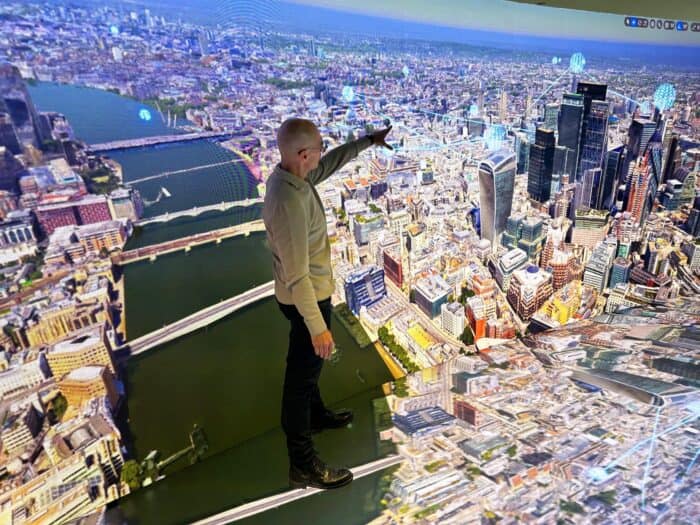 “We are using Cesium 3D Tiles for meshes to achieve massive scale 3D digital twins,” says Bentley’s Greg Demchak.
“We are using Cesium 3D Tiles for meshes to achieve massive scale 3D digital twins,” says Bentley’s Greg Demchak.Visitors then get a glimpse of the future of New York City on The High Line, the elevated park and green spot created on a former railroad on the west side of Manhattan. Set in a narrow corridor of screens, it’s a fully immersive experience. Piping into the passageway are the sounds of birdsong, pedestrians and the bustle of the city. But it’s the bare minimum of what’s possible. “You could link in anything with an API to enhance it,” Demchak says before reeling off a list. “Virtual crowds, weather, flood simulation, the Internet of Things, carbon data.”
In fact, digital twins could soon become spaces for sophisticated AI systems to “meet” and do business. Demchak floats the idea of AI-enhanced agents generating new infrastructure projects, with humans reviewing the results and making final decisions. “Right now, we can move an object or a word to make an image,” he says. “But once AI begins to render and reconstruct in a way that’s believable, then we’re starting to have a conversation.”
He adds: “I feel like we’re just getting started.”
